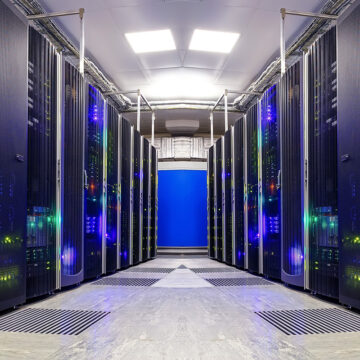Managing high-value assets, equipment or other perishable products involves putting a lot at stake. Temperature monitoring systems are now used in almost all industries for maintaining optimal temperatures, humidity and temperature ranges. Their range of their applications is vast and these systems are seen nowadays in medical, HVAC, agriculture, industrial, aerospace, automotive and many other sectors.
What are Temperature Monitoring Systems?
In simple words, a temperature monitoring system is a resistance temperature detector capable of temperature measurement in a readable form. These systems are designed to serve different purposes and are available in different types. Thermocouples, thermistors, and RTDs are the three most important types of temperature monitoring systems and your selection should be based on your purpose.
The right temperature monitoring system can help you track critical temperatures at data centres, in server rooms, cool rooms and other areas where temperature monitoring is critical. These systems are also critical to the transport of temperature sensitive items such as medicines, vaccines and perishable food materials. The function of a temperature monitoring device is to measure the temperature of a room or product to alert management that a breach has occurred, The working principle of these devices depends upon the voltage across its diode. The change in temperature is directly proportional to the diode’s resistance. The resistance across the diode is converted by these systems into readable temperature units.
How do they Work?
The temperature is measured by the monitoring systems through electrical signals. When a temperature change is experienced by the metals in the temperature sensor, electric voltage or resistance is generated by them. As already mentioned, the voltage across the diode terminals is critical to the functioning of a temperature monitoring system. An increase in voltage causes the temperature to rise. This is followed by a voltage drop between the diode’s emitter and the base’s transistor terminals.
Depending on the type of temperature to be measured, many different types of temperature sensors are available. Out of these types, contact and non-contact sensors are most commonly used. Contact temperature sensors must be placed in direct contact with the object for the measurement of temperature increases or decreases. On the other hand, non-contact temperature sensors can measure temperature changes through radiation emitted by the energy source. Therefore, there is no need to place them in direct contact with the object.
Choosing the Right Temperature Monitoring System
While choosing your temperature monitoring system, you need to remember that all these devices are not similar to each other. This is why you must be extremely cautious while selecting a temperature monitoring device. Mentioned below are a few factors to keep in mind for making the right choice.
- The system you select should be able to sense environmental factors that can affect the the products being monitored whether it be water damage, temperature, humidity or airflow for example.
- Integrated support is another key factor for temperature monitoring systems. This feature helps manage the entire network with emails or sms messages when a temperature or humidity breach has occurred without manually checking the device screens.
At ShockWatch, we offer a range of temperature monitoring devices that are used extensively for transportation or storage of temperature sensitive products. Please contact us to find out more about our temperature monitoring options.


